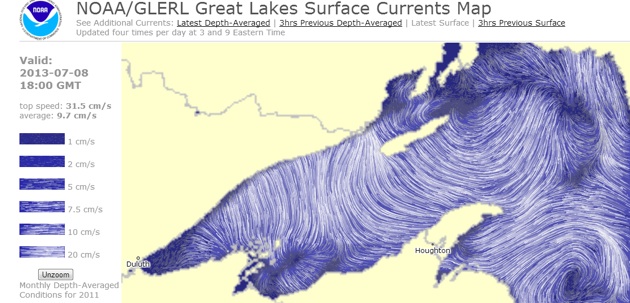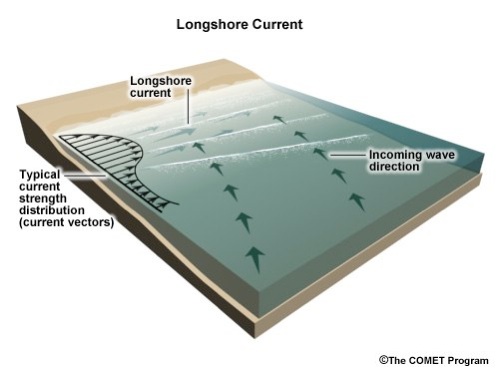


Wind and waves may often be dominant over the counterclockwise currents. Waves often strike the shore at an angle. This results in force along the shoreline amounting to a “longshore” current or current along the shore. If prevailing winds or the strongest winds occur in a particular direction, then sediments will be moved continually in the same direction by currents.

Currents develop in lakes from winds across the surface and from temperature patterns and bathymetry along with the Coriolis “force”. The current strengths and directions vary every minute, but in general they display a counterclockwise pattern. Locally the current is called the Keweenaw Current because the counterclockwise pattern bends to the north to go around the Peninsula. The current generally ranges from about 5-20 cm/s.

